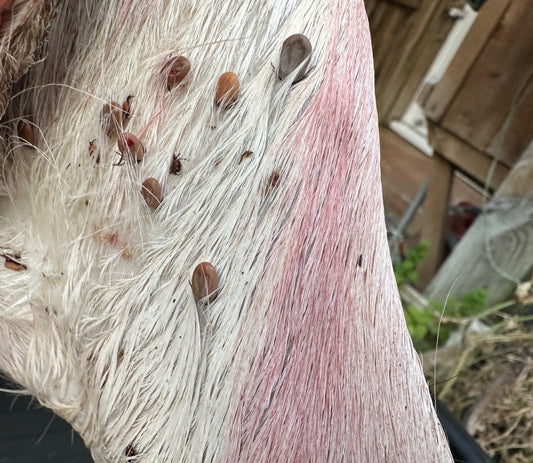In the practice of woodland management, three behaviours of deer stand out for their impact on tree health and forest structure: bark stripping, browsing, and brashing. At Wildscape Deer Management, we recognise these activities as natural aspects of deer ecology, but when left unchecked, they can pose significant challenges to woodland conservation efforts.
Deer Bark Stripping: The Hidden Threat to Trees
Bark stripping is a behaviour where deer strip the bark from trees, which can lead to a host of problems. The removal of bark exposes the vulnerable cambium layer, disrupting the tree's ability to transport nutrients and water. Over time, this can stunt growth, cause deformities, or even result in tree mortality. Understanding the drivers behind bark stripping, which can range from nutritional deficiencies to territorial behaviour during rutting season, is crucial for targeted management interventions.
 Our approach at Wildscape Deer Management involves initial assessments to determine the extent of bark stripping and identify the species responsible. Once we’ve pinpointed the cause, we can implement deterrents or protective measures, such as tree guards or repellents, and adjust deer population densities through ethical culling, if necessary.
Our approach at Wildscape Deer Management involves initial assessments to determine the extent of bark stripping and identify the species responsible. Once we’ve pinpointed the cause, we can implement deterrents or protective measures, such as tree guards or repellents, and adjust deer population densities through ethical culling, if necessary.
Deer Browsing: Natural Habit with Unnatural Consequences
Browsing refers to deer feeding on the lower branches, leaves, and tender shoots of trees and shrubs. While a natural part of deer behaviour, excessive browsing can hinder forest regeneration, alter species composition, and negatively affect the understory's biodiversity. In woodlands managed for timber or conservation purposes, unchecked browsing can undermine ecological and commercial objectives.
Our management plans for browsing involve carefully timed and executed deer population control measures, combined with habitat enhancements to provide alternative food sources. This strategy is designed to redirect feeding behaviours away from critical areas, thereby allowing for natural regeneration and the flourishing of woodland flora.
Brashing: The Lesser-Known Behaviour with Big Impacts
Brashing is the action of deer breaking off branches, often higher up the tree, which they typically can't reach while standing. This can occur as a result of deer standing on their hind legs to feed or during rutting when stags may thrash against branches to dislodge antler velvet or as a display of strength. The damage from brashing can lead to the formation of open wounds on trees, making them susceptible to disease and pest infestation.
To manage brashing, we incorporate a mix of population control and physical barriers. Where appropriate, we install higher fencing to prevent deer from reaching sensitive areas, especially during vulnerable periods for the trees.
Conclusion
Bark stripping, browsing, and brashing are all behaviours that, when properly managed, can coexist with a healthy woodland ecosystem. Our expertise in deer management allows us to advise on and implement strategies that balance the needs of the deer with those of the woodland environment. By conducting regular monitoring and adapting our methods to the changing dynamics of both deer populations and woodland conditions, we ensure the vitality and sustainability of the woodlands we manage.





